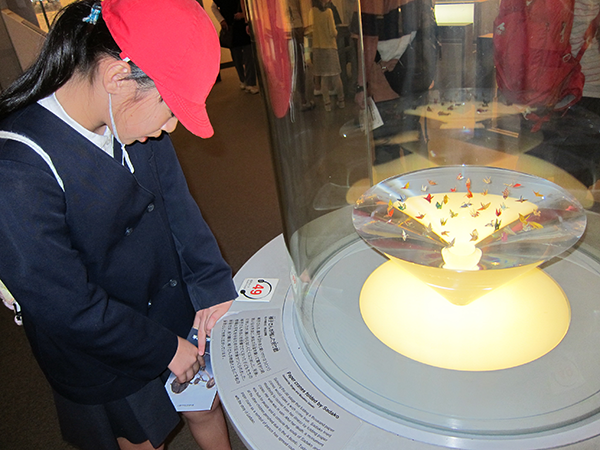Heart of Hiroshima
 |
|
[Photo by Sun Ye/China Daily] |
Except you now have the acute sense that such a happy, peaceful life doesn't come easily.
The designated City of Peace reminds you of the past whichever way you turn.
Shukkei-en, the 17th-century garden of miniature ponds, bridges and hills that showcases Japanese aesthetics, is rightly admired for its layout. But come close-up to a tree, or a hut and the plaques would explain how far it was from the hypocenter, whether it survived or not, and how it was finally restored.
It's the same with buildings along Hatchobori: Introductions are about whether or not they withstood the blast. That clear summer day in 1945 is seared into their history.
Step away from downtown to the suburban Mitaki temple. Amid the green and the famous passage of Buddha figures, stone tablets describe what was seen from the site on that day.
Traffic hub
Boarding the streetcars, the city's primary means of transportation, you're told the convenience came from a nationwide donation in the wake of the tragedy.
As the city picked itself up with help of the national Hiroshima Peace Memorial City Construction law after the war, it regained its place as a traffic hub and one of the most prosperous cities in the region.
If you lay your eyes on oleander, voted the city flower, you will think of the A-bomb too. It was the first flower to bloom after the explosion, when belief was rampant that the land would yield nothing for 75 years.
Or if you see a message of Mayor Kazumi Matsui on fliers and posters, it's very likely to be this: We're working to abolish nuclear weapons by 2020. For world peace, join up!
I chose to stay in the Pacific Peace Hotel for its location as well as the name, and here is how I respond to Matsui's call: Go to Hiroshima and take peace to heart.














